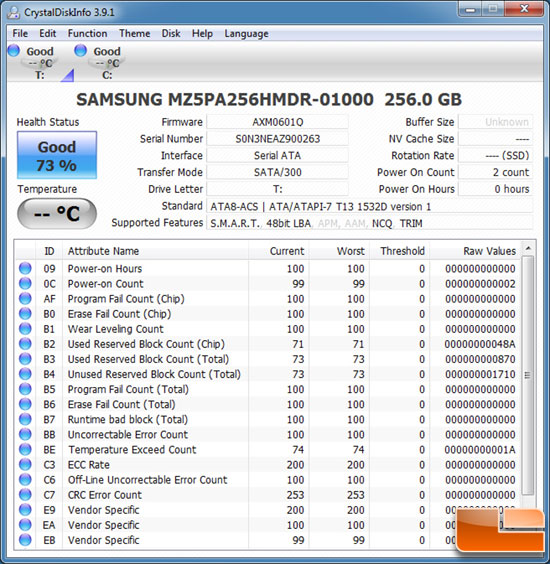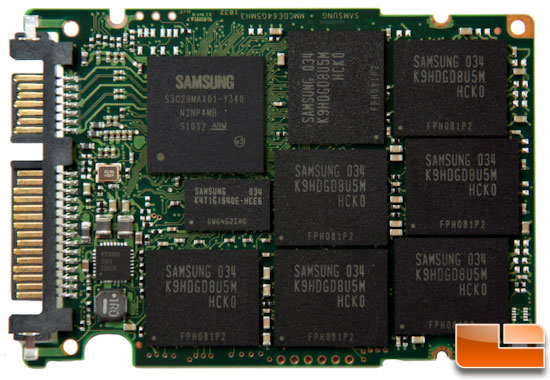Samsung 470 Series 256GB SSD – Long Term Test Results
Final Thoughts & Conclusions
Originally, we show zero hours logged on the drive and ended with 2014 hours with 59 power on counts according to CrystalDiskMark Info. The drive was loaded to about half full with 112 GB of capacity used with apps, games, photos, movies and other content making it representative of a normal user’s system and in fact, it is a normal user system – mine.
CrystalDiskMark Info – Original

CrystalDiskMark Info – Final

While this wasn’t a comprehensive full out test, based on the few benchmarks we ran the verdict is pretty clear. The performance loss over the course of three months of normal use is minimal at best, with no real discernible difference observed by the user. Windows boot time is still under 15 seconds where we see most of the newer drives performing out of the box. The triumvirate of TRIM, idle garbage collection and the wear-leveling algorithm of the controller all combine to maintain performance admirably. Early SSDs didn’t have most of these features and long term performance suffered as a result. Users have been gun shy about buying SSDs ever since and the perception still exists with many that the same malady affects the newer drives.

As I mentioned on the first page, I’ve been very impressed with the Samsung 470 Series drive and although this was specific to the Samsung drive and controller, I would expect to see similar results from any of the latest generation of drives. I personally have had several different drives in multiple systems for many months and all continue to hum like they did on day one. The only time a difference was observed was on a MacBook Pro running on a SandForce drive. The drive was completely filled with media on a few occasions while traveling which triggered a slow down in performance mainly because OS X does not support TRIM. However, with this free app (use at your own risk!) you can enable TRIM on OS X. After enabling, performance resumed where it was to start with (based on subjective observation). The bottom line is that those waiting to buy an SSD because of perceived long term performance issues can have a little more peace of mind that their purchase will continue to perform at high levels over time. We say play more, worry less!

Comments are closed.